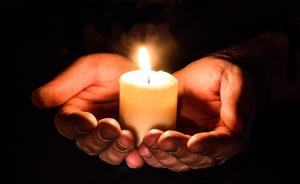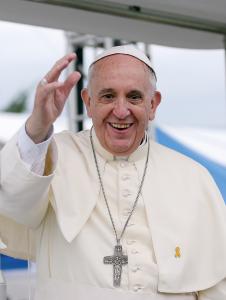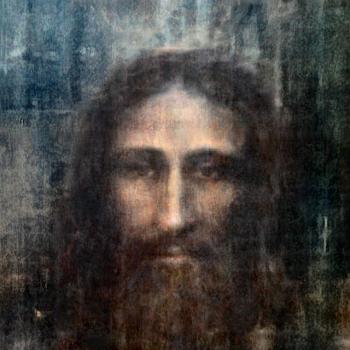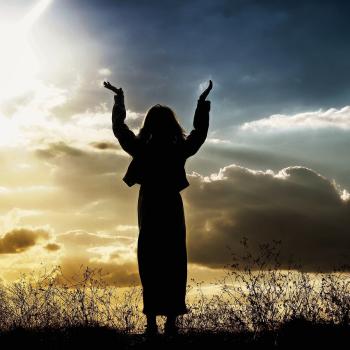(This is the 9th and final essay in this remarkable series on Prayer by Bill Miller)
Putting Theory Into Practice
If prayer requires more active involvement than simply articulating a list of requests, then passively turning it over to a higher power to do the work, what might it require of us? How might we engage?
The following is offered as initial exploratory steps toward the next stage in our spiritual evolution. It is still an emerging dimension, so the following should be understood more as an initial guiding suggestion rather than a dogmatic set of instructions.
To the extent that, as proposed here, the effects of attention and observation operate in the macroscopic world (i.e. “normal” reality) in a manner similar to phenomena at the quantum scale, deliberate attention to an alternate set of potentialities may be instrumental in the collapse/decoherence/manifestation of an alternately experienced reality.
How might this work in practice? Following the model in this paper, a prayer “request” — (i.e. intention), is the desire for a particular set of current circumstances (a discrete bundle of events) to reemerge or re-manifest as an alternate, preferred set. Some examples, among a myriad of others, might be:
- Safe arrival after a journey
- Harmonious result following a difficult upcoming conversation
- Favorable outcome of a challenging endeavor
- Satisfactory resolution of a problem
- Increase in collective harmony, understanding, empathy, insight amongst a social grouping
- Optimized physical or mental health or recovery
Again, the current premise is that at the grandest cosmic scale, the above (as well as any other set of events) exist in a superposition of all possible states and outcomes — one of which has emerged (“collapsed”) into manifest experience though the attention of consciousness.
Note that this is not as mystical-schmistical as it may first appear. A sculptor for example begins with a lump of clay or block of marble, then imagines a particular form, thereby “observing” a sculpture into being. Prior to that, the clay lump or marble block contains all possible sculptures in superposition.
Accordingly, for life circumstances that may unfold in a variety of ways, or are amenable to alteration, the alternate reality emerges in a manner similar to the sculptor’s statue:
|
Block of marble
|
Palpable imagined sense of particular form | Michelangelo’s David |
Similarly:
| Initial Condition A | Prayer (2.0) | Resulting Condition B |
| Boarding airplane | Palpable vision of safe debarkation | Predisposed emergence of safe arrival |
| Social conflict | Felt sense of harmonious resolution | Realization of the same |
| Physical or mental illness or stress | Felt sense of what it is like to be whole | Increased predisposition to experience wholeness |
Beginning with awareness and imagination, the process might generally proceed as:
- Observe Condition A
- Become aware of what A feels like (why is it uncomfortable, improper, or wrong)
- In a general way, identify and imagine desired Condition B — realizing that due to Complexity, the good may well not emerge exactly as envisioned (quantum probabilities rather than mechanical precision — like aiming for a target with a shotgun rather than a bullet), Again, we are not attempting to mechanically control reality (magic), we are simply shifting probabilities.
- What is it like to be, in a feeling-sense, in Condition B? I.e. what is the world like/ what are others like/ what am I like when reality is in Condition B?
Note however that, while the above may appear to be a series of rational, conceptual steps, it is largely not a rational, mechanical, step-by-step process. Rather, it is a process incorporating factors beyond mere rational planning — also including emotional experience and imagination. The sculptor “feels” the tension of an undeveloped lump of clay, then imagines/feels the experience of its existence in an alternative form.
Unlike the sculptor analogy however, Prayer 2.0 is not about the pray-er doing something. He or she is not a magician or deity, creating an effect through supernatural power, skill, or effort. She or he is simply a participant in seeding/catalyzing an overarching transcendental process of emergence.
Collective Prayer and Coherence
Note also that when this process is done collectively with others whose intention is sufficiently similar (“coherent”), the outcome may be amplified. To the extent that the field of Consciousness functions similarly to the fields of electromagnetism, when the waveforms align in synchrony, the power is increased exponentially. That is for example what makes a laser more powerful than a flashlight. In the corporate world, this may also explain why small start-up companies can often be more creative and dynamic than larger established companies — it is easier to share a common, collectively coherent vision.
The above is perhaps why religions and spiritual ceremonies commonly rely upon ritual — chants, singing, dance, collectively read liturgy, pilgrimage, and the like. These can all be a means to get out of the individual, left-brain conceptual world and induce a collectively coherent experience.
The Animating Force
Again, the above is not necessarily a mysterious, unfamiliar process. When one suffers a physical injury or illness, one might seek medical attention in order to be “cured”. Yet note that the clinician generally does not do the actual curing. He or she “observes” into being the proper conditions for healing — through surgery, casts, splints, medications, recommendations for rest and diet, and the like. The actual healing is then done by the body itself (by a process that I daresay we do not fully understand).
In effecting a prayer, where does the imagined alternative form arise from in the first place? Along with phenomena like creative insight, inspiration, or dreaming, it is likely from domains of existence above/ beyond/ beneath conventionally experienced physical spacetime. For example, when asked how he was able to write magnificent symphonies, Beethoven reportedly stated that “I don’t write them at all. I simply transcribe that which I hear full in my head.”
The premise of this paper is that such “domains of existence” are not separate and discrete from our individual subjective selves — not something we “pray to” or interact with in a subject/object sense. Rather they are subtle dimensions of the self that extend into and participate with the cosmos as a whole.
Roughly stated, imagination seems to be the functional interface between mundane existence and the cosmic Whole. From a Prayer 2.0 perspective, imagination functions somewhat like the programming language of the universe — the difference being that the latter is static, objective, and mechanical whereas prayer is living, subjective, and experiential.
One Final Caveat
This paper centers around the notion that as evolving spiritual beings, we are now challenged to take up a more proactive role in the way our experienced world manifests. A central means for this is an expanded understanding of prayer which involves not only rational language and concept but in addition, fundamental experiences of emotion, intention, and imagination.
In that light, one should be aware that every self-induced thought, feeling, and imagined scenario might effectively function as a “prayer”. Accordingly, it behooves us to be mindful about what we place our attention and imagination upon, and what we preoccupy with. From an evolutionary standpoint, we were conditioned to focus first upon threats and dangers (whether real or imagined) because historically, that was necessary for survival. Today however, obsessive, and especially emotionally-charged preoccupation with these runs the danger of predisposing such undesired potentialities to emerge as actualities.
Bottom line, be wary of inadvertently “praying” for a reality that you do not want to see realized. Instead, though it runs counter to our evolutionary programming, much as possible, imagine and focus upon the good.
Admittedly, the above is difficult in modern culture where the news and entertainment media pander to our base instincts in an effort to grab attention. Staying awake and countering such pressure with a hopeful vision will be an ongoing challenge. Yet that is the evolutionary task at hand.
It won’t likely be easy, but the new possibilities may be glorious beyond imagining.

















